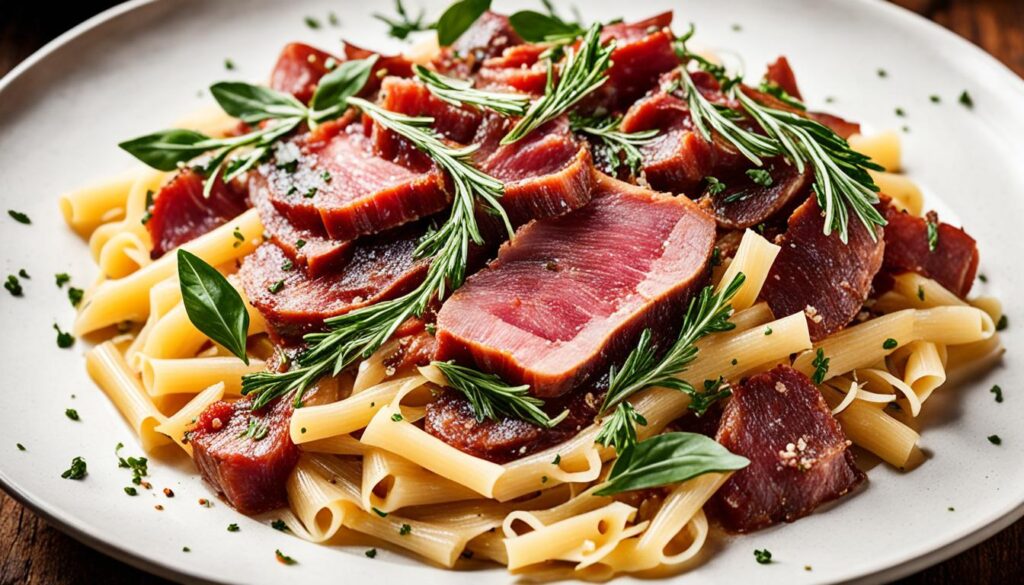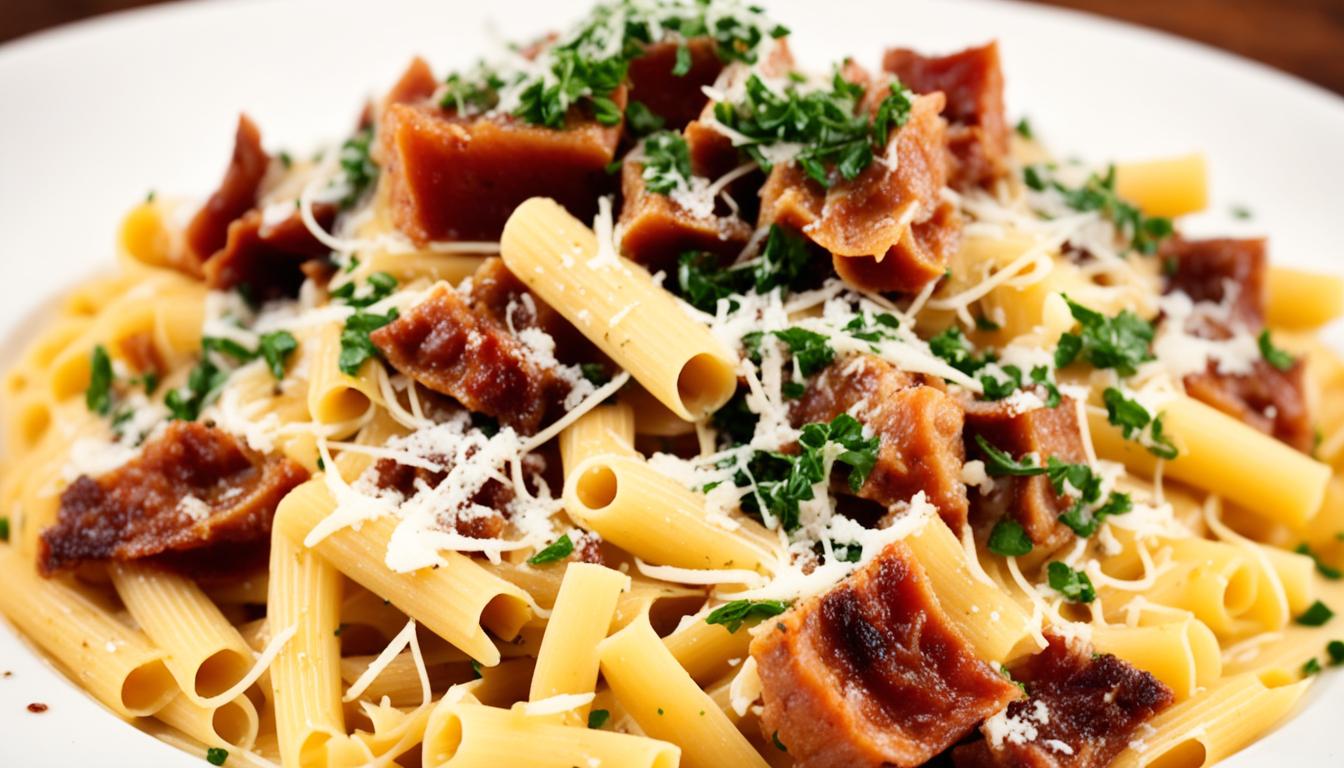Did you know that the humble yet delectable pasta alla gricia has been a beloved staple in Roman cuisine for centuries? This classic Italian dish, with its rich flavors and simple preparation, has captivated the hearts and palates of food enthusiasts around the world. Originating in the Apennine mountains of Rieti, in the Lazio region of central Italy, pasta alla gricia is a testament to the enduring culinary traditions of the region.
Pasta alla gricia features a few key ingredients that work in perfect harmony: guanciale (cured pork cheek), pecorino romano cheese, and black pepper. This simple yet flavorful dish has become closely associated with the cuisine of Rome, where it is considered a beloved staple. The dish’s origins trace back to the shepherds who would migrate through the region, bringing with them the essential ingredients that would eventually form the foundation of this beloved Roman delicacy.
Origins and History of Pasta alla Gricia
Pasta alla gricia has its roots deep in the shepherds’ dish of the Rieti province, nestled in the Apennine mountains of the Lazio region in central Italy. These hardy shepherds, who undertook the seasonal transhumance with their flocks, carried with them a limited pantry of ingredients that were easy to store and transport, including pecorino cheese, dry pasta, black pepper, and the prized guanciale.
Traditional Shepherds’ Dish
As the shepherds made their way to and from Rome during their seasonal migrations, they would regularly prepare this simple yet delicious dish, which was soon adopted by the local population who appreciated its robust flavors and uncomplicated nature.
Evolution from Amatriciana
Pasta alla gricia is closely related to another classic Roman cuisine favorite, amatriciana. In fact, gricia is sometimes referred to as a “white amatriciana,” as it is made without the tomato sauce that distinguishes the amatriciana recipe. The dish also shares similarities with the beloved cacio e pepe, with the addition of the savory guanciale.
Adoption in Roman Cuisine
As the shepherds’ dish became more prominent in Roman cuisine, it was also embraced by skilled local cooks, who introduced a number of techniques and tricks to enhance its flavors. While the dish remains delightfully simple, these refinements have helped cement its status as a beloved staple of classic Roman pasta dishes in the Lazio region.
Ingredients for the Perfect Pasta alla Gricia
At the heart of the delightful pasta alla gricia lies a trio of essential ingredients that come together to create a flavor symphony. Let’s explore these key components and understand why they are so vital to this classic Roman dish.
Guanciale: The Star Ingredient
The star ingredient in pasta alla gricia is guanciale, a type of cured pork cheek. Guanciale has a distinct texture and a more intense, spicy flavor compared to pancetta or bacon. While finding authentic Italian guanciale can be challenging in the United States, there are some good local alternatives available, such as Fortuna Guanciale, that can be used as a substitute.
Pecorino Romano: The Authentic Roman Cheese
Another essential ingredient in pasta alla gricia is pecorino romano, a salty, aged sheep’s milk cheese that is closely associated with the Lazio region and Roman cuisine. While the shepherds who originally made the dish may have used a more delicate pecorino from their home region of Rieti, pecorino romano has become the standard cheese used in modern renditions of pasta alla gricia.
Black Pepper: A Crucial Seasoning
Black pepper is a crucial seasoning in pasta alla gricia, and it is often used in a combination of finely and coarsely ground varieties. To enhance the flavor of the pepper, it is common to toast the peppercorns briefly in a pan before grinding, which helps to mellow the acidity and bring out the pepper’s aroma and complexity.

Mastering the Pasta alla Gricia Technique
To prepare the perfect pasta alla gricia, we need to pay close attention to a few key techniques. First and foremost, the guanciale, the star ingredient of this dish, should be cooked slowly over low heat. This gentle cooking method helps to close the pores of the meat, locking in its flavorful juices and creating a delightful texture.
Once the guanciale has been seared to perfection, we’ll deglaze the pan with a splash of white wine. This simple step adds an extra layer of depth and richness to the dish, ensuring that every bite is bursting with flavor. As the pasta cooks in the boiling water, the starch in the cooking liquid creates an emulsion with the rendered guanciale fat, resulting in a creamy, velvety sauce that coats the noodles beautifully.
Finally, to take our pasta alla gricia to the next level, we’ll stir in a simple “pecorino cream” made by mixing the reserved guanciale fat with grated pecorino romano cheese. This final touch adds an extra layer of creaminess and savory goodness, making every forkful of this classic Roman dish an absolute delight.
